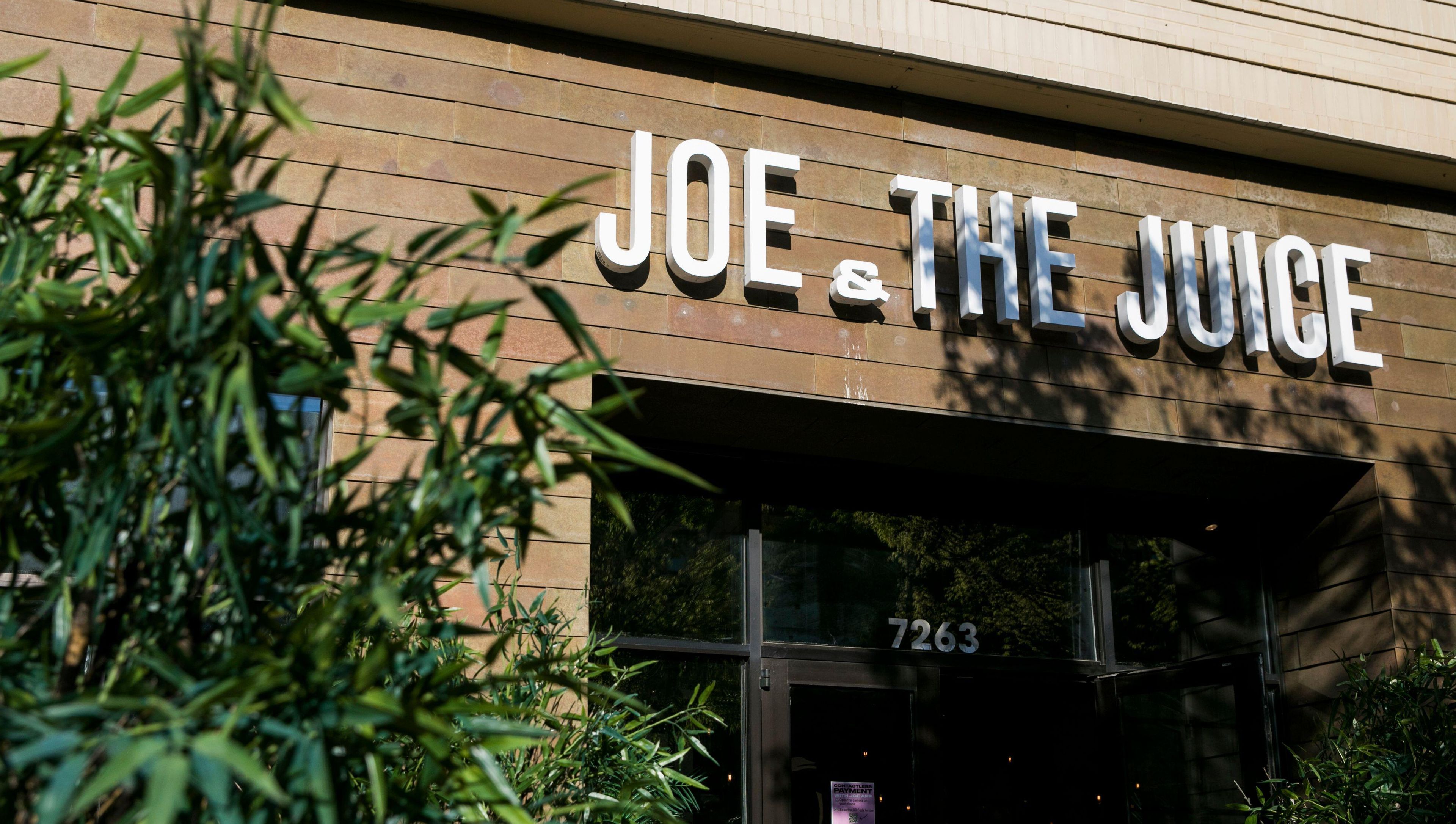Navigate the evolving terrain of brand awareness in 2025 with our definitive guide, empowering brands to cultivate resonance and a customer loyalty, in an ever-changing market
Creating a successful brand is more than having a catchy logo and tagline. It requires building an emotional connection with your target audience beyond the product or service you offer.
To do this, you must increase your brand awareness — the extent to which people know about and recognize your company. Effective marketing campaigns not only promote products but also aim to reinforce brand awareness, ensuring the brand remains a top choice for potential customers.
The good news is that there are many strategies businesses can use to build their brand recognition, from content marketing and influencer outreach to creative guerilla tactics.
In this guide, we’ll cover all these methods in detail so you can create a comprehensive plan for building awareness and boosting your visibility in the marketplace.
We’ll also discuss why it’s important to monitor key metrics related to brand awareness, like impressions and reach, so you can evaluate whether or not your efforts are paying off in terms of increased leads and sales down the line. By following our advice, you’ll be well on your way towards creating an iconic brand!
Introduction to Brand Awareness
What Is Brand Awareness?
Brand awareness is the extent to which people recognize, remember, and understand a particular brand. It refers to how familiar customers are with a company’s products, services, and reputation.
Brand awareness amplifies the impact of the brand story, ensuring that every interaction reinforces the core message, creating a cohesive and memorable experience that strengthens brand identity and trust. It is also crucial to measure brand awareness to evaluate the effectiveness of marketing strategies.
Creating strong brand awareness requires crafting your message so your target audience understands it quickly, remembers it easily, and associates it with your company’s identity.
This involves creating an effective visual identity, having a consistent messaging strategy across platforms, engaging influencers who can amplify your message, and running campaigns that will draw attention to you among your target audience.
A consistent brand presentation increases revenue by up to 33% - Marq
Source: Joao Tzanno on Unsplash

Why Is Brand Awareness Important?
Having a strong brand awareness strategy to create brand awareness can offer many advantages for businesses. Studies have shown that companies with high brand awareness increase their customer base, increasing sales and higher profits.
Not only does increased recognition drive more website traffic and followers on social media channels, but it also helps establish trust between the company and its customers.
Strong brand awareness leads to better word-of-mouth marketing, as customers are more likely to recommend a product or service when they’re familiar with the brand behind it.
This can ultimately result in lower costs for acquiring new customers since each referral will be worth far more than an advertisement. Additionally, research has demonstrated that consumers are more willing to pay more for products from well-known brands due to their perceptions of quality and value.
Important brand awareness metrics can provide critical insights into a brand's reach and inform strategic decisions for optimal marketing performance.
A strong brand awareness strategy can also improve search engine rankings, as people tend to click on recognizable brands when searching online. This increases visibility in organic search results and helps bring even more attention to the company’s products or services.
Source: Soofa

Ultimately, developing a strong brand awareness strategy can help businesses create an emotional connection with their target audience beyond just the product or service they offer.
Companies raise and improve brand awareness only by consistently delivering exceptional customer experiences from start to finish and focusing on creating meaningful relationships through effective communication strategies. They can create memorable impressions that will stay with customers for years.
What Are the Different Types of Brand Awareness?
Brand awareness comes in several forms, each reflecting how well consumers recognize and recall your brand.
Brand Recognition happens when people can identify your brand by visual cues like your logo or packaging.
Brand Recall goes deeper — customers remember your brand name when thinking about a product category.
Top-of-Mind Awareness is when your brand is the first one people think of in your niche.
Brand Dominance means your brand is so strong, it’s almost synonymous with the product itself.
Each level shows how deeply your brand lives in the minds of consumers.
What to Consider Before Brand Awareness Campaign Starts
Knowing Your Ideal Customer Profile
Understanding your ideal customer profile or user persona is essential for building an effective brand awareness and marketing strategy. Knowing who you are targeting is the first step towards crafting messages that resonate with them and creating campaigns that draw attention to your company.
Creating an ideal customer profile involves more than demographics — it requires knowing their interests, values, lifestyle, and needs. By deeply understanding who they are trying to reach, businesses can create content that speaks directly to their audience and ensure they focus their efforts on the right people.
Additionally, knowing the needs of your target audience can help you identify opportunities where your products or services could provide value in ways that competitors may be missing out on.
Source: Justinmind

When identifying your ideal customer profile, it’s important to look for patterns in their behavior, interests, and preferences so you can create content that appeals to them most effectively. The best way to do this is by using data-driven insights from analytics tools such as Google Analytics or social listening tools like Hootsuite.
These tools can provide detailed information about what topics people are engaging with on social media sites or which keywords they’re searching for online – giving businesses a better idea of what kind of content will make them stand out from competitors and drive traffic to their website.
Knowing your target audience also means being aware of any potential objections or concerns customers may have about your product or service before they even engage with it.
This allows businesses to address these issues head-on through messaging strategies and campaigns tailored to each objection individually. This helps build trust between customers and the company, ultimately leading to greater recognition for the brand over time.
Understanding who you are trying to reach is essential for creating an effective brand awareness strategy that resonates with customers and drives traffic and conversions.
By gathering data-driven insights into customer behavior and preferences, businesses can craft targeted messaging strategies designed specifically for each target audience segment – resulting in higher engagement rates and increased brand recognition over time.
Analyzing Your Current Audience
Analyzing your current audience is essential for building a successful brand awareness strategy. By understanding your existing customers’ demographic and psychographic attributes, businesses can gain valuable insights into who they should target in the future.
Data-driven insights can also provide businesses with valuable information about how customers interact with products or services over time. For example, businesses may find certain segments more likely to complete purchases after viewing specific content on the website or engaging with particular social media marketing campaigns.
Source: Search Engine Journal

By analyzing their current audience, businesses can also identify opportunities to provide additional value in ways that competitors might be missing out on – potentially giving them an edge when reaching new customers over time.
Crafting an Effective Messaging Strategy
When crafting a messaging strategy for creating brand awareness, businesses must consider what content resonates most strongly with their customers.
This includes determining which keywords are used in content marketing efforts and optimizing SEO strategies to increase visibility for specific topics or keywords related to the business’s products or services.
Additionally, businesses can use data-driven insights into customer behavior to create targeted messaging strategies designed specifically for each individual segment of their target audiences – resulting in higher engagement rates and increased brand recognition over time.
Source: WallStreetMojo

How to Build Brand Awareness
Increasing brand awareness cannot be achieved in a day or with just a single advertisement. Effective brands do more than sell products. They create relationships, narrate powerful stories, and build interaction that ensures customers return. Ads may boost sales, but they do not build relentless brand recognition. A multi-faceted approach is needed.
Humanize Your Brand
Corporations are not people; hence, they cannot connect with individuals. For example, when meeting a new friend, you want to learn about their hobbies and morals.
Your brand must have an identity and speak to the target audience. Establish what the brand represents and how it communicates. Small teams can have a powerful and favorable presence with little personal involvement.
Be Social, Beyond Sales
Every brand has a version of the story that portrays them as ideal case studies for post-purchase dissonance. Still, few have a social media framework that prioritizes relationship management. Strategyless sales tend to build brands that come off as unfriendly or too business-centered and distant.
It matters how businesses converse with customers. Partake in all sides of social media, whether posting about memes, real news, or content you think is useful. The reality is that founders can do so much by showing up.
Tell a Story That Resonates
Everyone wants a good story behind a brand. Brand and product journeys tell a product's story in a more appealing, less machine-like manner. Human beings want to connect.
A good story expands and weaves into the brand's marketing, making it easy to remember. Storytellers need to focus their message on goodwill, truth, and relevance. Indeed, inspirational stories result in higher probabilities of brand advocacy due to loyalty.
Make Sharing Effortless
Nobody can deny the fact that gossip is a part of life. Ensure that pages are manicure-ready to share blogs, videos, and other products on social media. Cane tactics suchable leads know. When a brand is being recommended, automatically, others become surprised.
Brand Awareness Is About Impact, Not Just Promotion
Awareness of your brand cannot simply be achieved through motivation. It's about the interactions you create that prompt engagement. Friendships are not formed through demands; similarly, brands that seek to connect will leave a mark. When positively approached, awareness brings trust, loyalty, and long-term success.
Effective Strategies to Boost Brand Awareness
Put Social Media to Use
Use Instagram, Twitter, Facebook, LinkedIn, and other social media platforms to connect with your audience, share exciting content, and market your product or service. Be active by posting often and replying to comments while joining in on trends and discussions.
Influencer Marketing
Engage with influencers from your industry who already have substantial followers — this will help you get the right eyes on your ad campaigns. These partnerships include reviews, giveaways, or sponsored posts, aiding audience expansion and brand confidence.
Invest in Advertising
Run campaigns on Google, Facebook, Instagram, and other platforms to advertise to specific audiences. Always rely on relevant and sufficient data and analytics to make the necessary adjustments to your ads.
Get a Content Marketing Strategy
Create compelling and informative blog articles, videos, infographics, and eBooks that answer your audience's C problems. This will encourage high engagement from your intended market and enhance your brand image as an industry expert.
Source: pinterest

Talk at International and Local Events
As part of your marketing strategy, you can attend or support local events to genuinely engage with your audience. Such events provide an excellent platform for brand promotion and customer engagement.
Go the Extra Mile In Customer Service
Strive to provide productivity that positively changes customer opinion. Be quick to address issues, tend to complaints, and ensure that customers are impressed. Customers who are pleased with the services are likely to promote the business verbally or through positive reviews.
What Are the Examples of Good Brand Awareness?
Brand awareness is not merely recognizing a logo and memorizing a tagline. It is about establishing a connection that the consumer favors. Despite many associating such examples with Coke and Nike, even lesser known brands are succeeding in having an impressive brand awareness but in a manner distinct from the other brands.'
For example, there is Patagonia. This outdoor clothing company is well known among consumers not just because of the affordable price of the products but also because they preach the gospel of environmental protection, interpreting these words under the concept of green marketing.
A novel advertising approach is the campaign, "Do not buy this coat." If they do not want people to consume, placing such ads separates them from the rest, which is a strong positioning. They could mix their advertising strategies without offending using traditional marketing methods.
PalmPalm exemplifies this approach with its vibrant, beach-inspired branding that reflects its Southern California roots. We used sunset hues, playful typography, and lifestyle imagery to create a strong, recognizable visual identity that sets PalmPalm apart in the health and wellness market.
This cohesive design strategy enhances brand recall and communicates PalmPalm's commitment to a fun, active lifestyle, resonating deeply with its target audience.
PalmPalm identity by Clay

Strong brand recognition does not necessitate cutting-edge marketing tactics or massive ad spending. More often, it resides in crafting something completely unexpected for your target market, keeping in mind that they can deliver on your core beliefs. These superb examples demonstrate that no single formula guarantees brand success.
How to Measure Brand Awareness
Evaluating brand recall helps companies understand how well their potential audience can identify and remember their brand. It is a key performance indicator for evaluating the effectiveness of their promotion strategies, looking for gaps and consumer attitudes.
As statistics show, brand awareness impacts buyer choices and is essential for the strength of trust and retention among customers over a lengthy period. Take a look at the best ways to enhance brand awareness measurement.
Surveys and Polls
This allows you to target consumers directly and ask them if they are familiar with your brand through surveys and polls.
Make sure to ask questions about awareness of the brand (for instance, do they know your logo or tagline?), recall of the brand (for example, can they remember your brand if they are told what the products in your brand category are?), perception (for example, how do they think of your brand against other brand names?).
This response can yield valuable qualitative and quantitative information on how the targeted audience of a business perceives the brand.
Traffic On Website
Assessing a website's performance can determine whether a specific brand is popular. Direct traffic, meaning brand awareness and a high level of familiarity, comes through visitors who enter the URL directly into their online browser, thus being a greedy asset to any company.
Furthermore, online searches, plugging in sources, and even demographic data of existing users aid in determining if people are actively looking for a specific company or its products.
Volume of Searches
Tools like Google Trends and Google Keyword Planner enable users to see how many times a specific word, such as a brand's name, is being searched by people. If a specific figure is being searched excessively, it could possibly be linked with various marketing strategies.
Therefore allowing one to evaluate their effectiveness. It is also useful to look up your keyword search volumes compared to those of your active competitors.
Source: Eaters Collective on Unsplash

SOV (Share of Voice)
Measuring engagement can be done through Share of Voice, where a specific computer brand can relate to other brands in the same industry.
This can be done by searching blogs, social media platforms, and forums, as it could bring up any information regarding the brands and their features, further allowing one to measure their presence in the market.
Greater brand loyalty often translates to a larger Share of Voice values, which in turn means greater awareness, while lower values mean higher levels of marketing would be required.
Brand Tracking Studies
Brand tracking studies are longitudinal context surveys that seek to recall a specific audience over time. These engaging and in-depth studies provide rich information on changes in brand awareness, familiarity, and perception over a certain period.
They may also point out possibilities to spot trends, measure campaign effectiveness, or anticipate shifts in consumer sentiment before they escalate further.
Applying these techniques repeatedly can allow companies to properly understand where they are in terms of brand awareness and where it leads over time.
This helps organizations adjust their marketing initiatives, reach out to specific audiences, and enhance their brand image in the market. Building effective brand awareness goes beyond just visibility; it ensures there is recall and trust.
Read More:
Conclusion
In conclusion, brand awareness is an essential part of any successful business. By tracking performance metrics and analyzing customer behavior data, businesses can quickly identify areas that need improvement or adjustment to ensure their strategies effectively reach target audiences.
Utilizing SEO techniques such as structured data markup and multimedia embedding can also help increase brand visibility while driving high-quality traffic from potential customers.
Adjusting strategies accordingly based on these insights will allow businesses to stay ahead of the competition and maximize reach among their desired audience – leading to long-term success!


About Clay
Clay is a UI/UX design & branding agency in San Francisco. We team up with startups and leading brands to create transformative digital experience. Clients: Facebook, Slack, Google, Amazon, Credit Karma, Zenefits, etc.
Learn more

About Clay
Clay is a UI/UX design & branding agency in San Francisco. We team up with startups and leading brands to create transformative digital experience. Clients: Facebook, Slack, Google, Amazon, Credit Karma, Zenefits, etc.
Learn more


